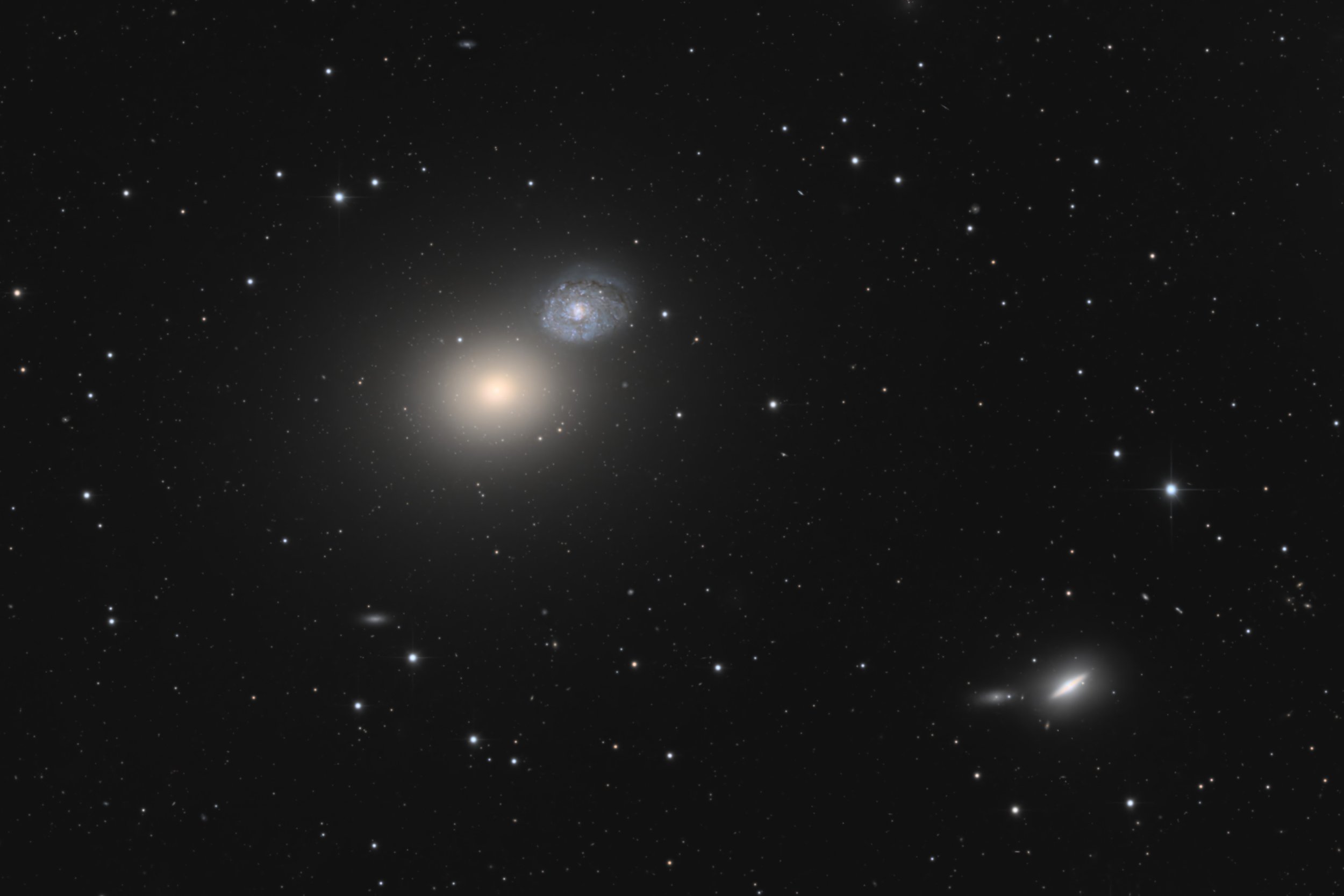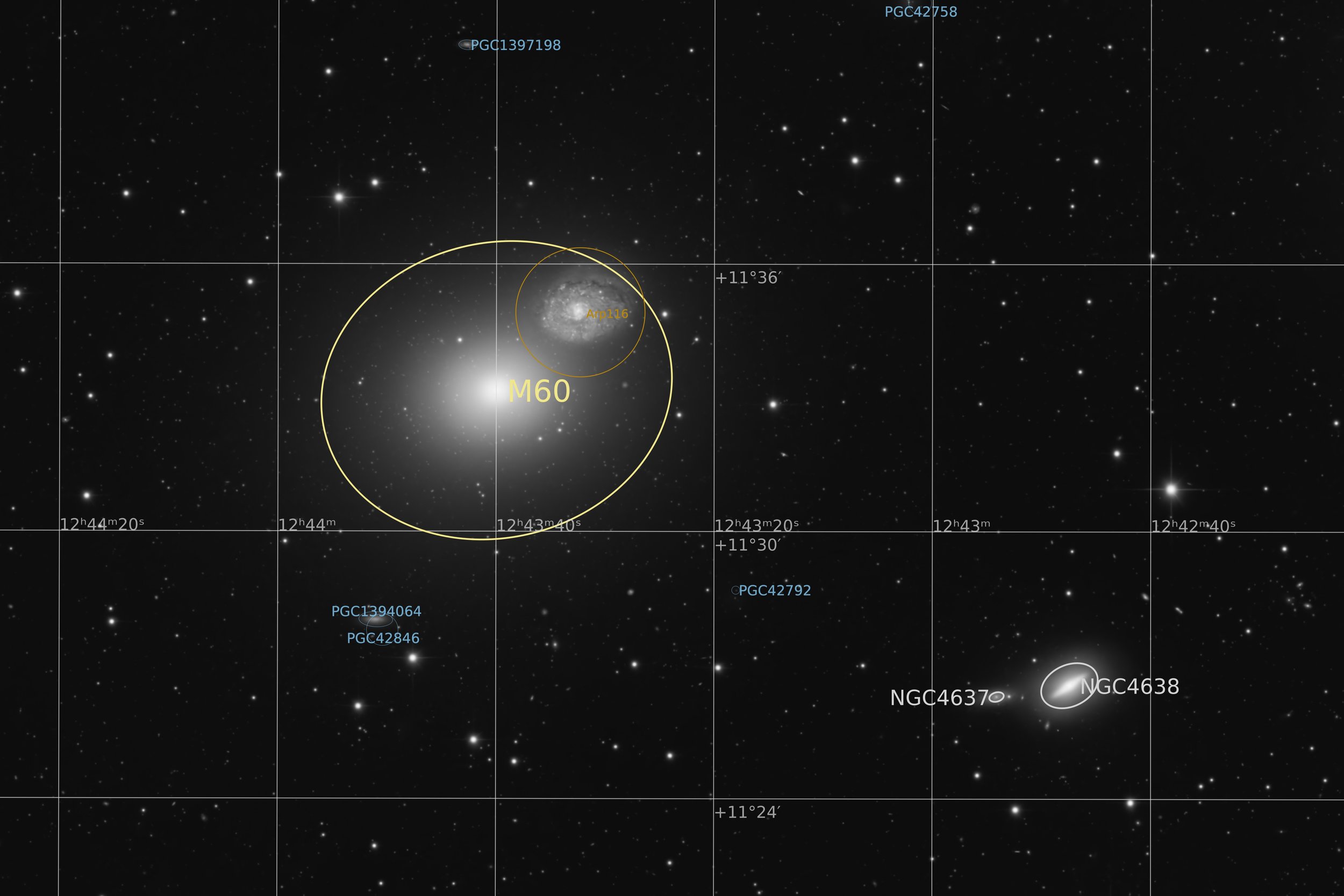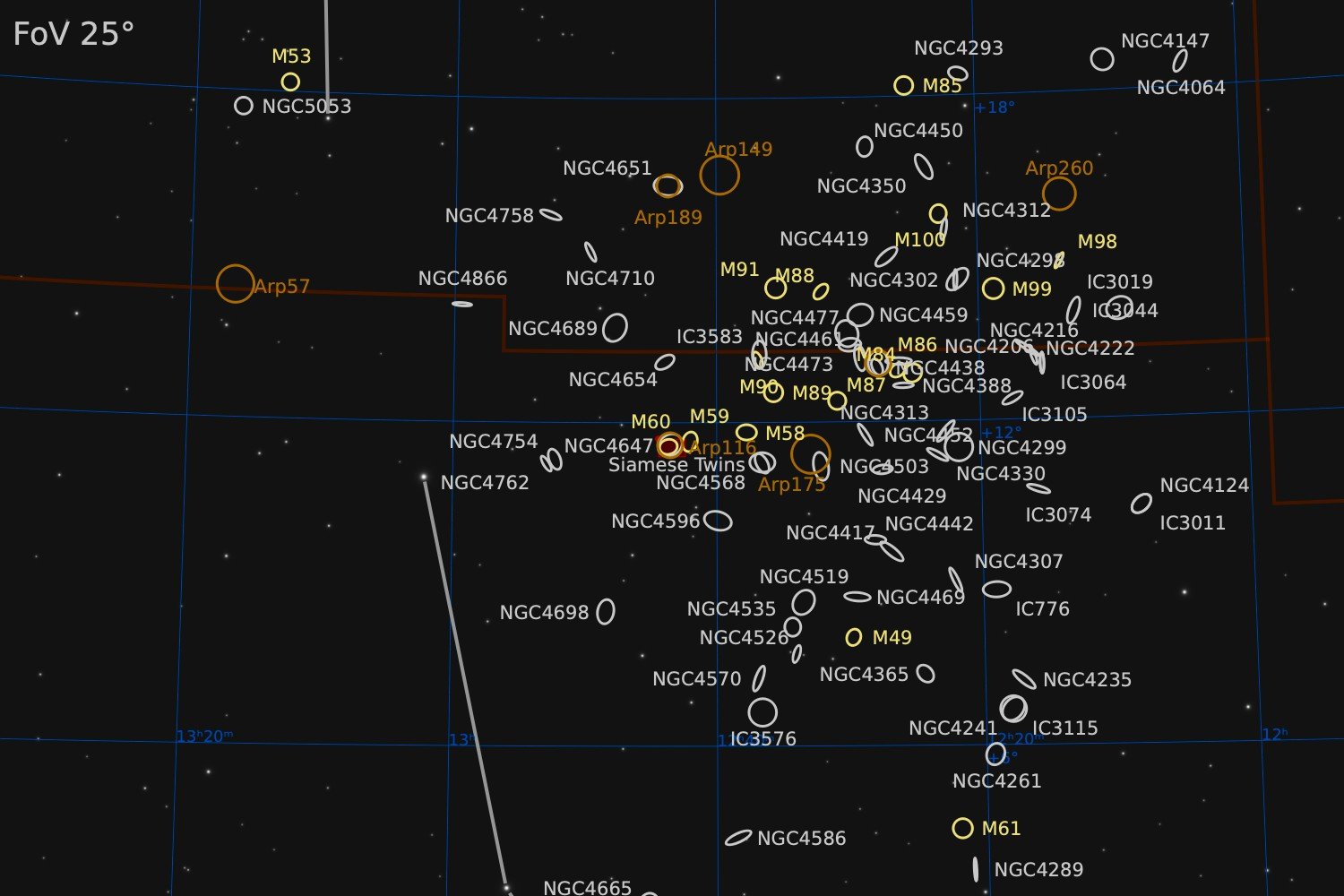M60 | Arp 116
NGC 4649, NGC 4647, NGC 4637, NGC 4638
30’ x 20’ | 0.3”/px | 6000 × 4000 px | full resolution
Virgo
RA 12h 43m Dec +11° 31’ | 0°



Messier 60, also known as NGC 4649, is an elliptical galaxy approximately 57 million light-years away in the constellation of Virgo. Together with NGC 4647, it forms a pair known as Arp 116. Messier 60 and nearby elliptical galaxy Messier 59 were discovered by Johann Gottfried Koehler in April 1779, observing a comet in the same part of the sky. Charles Messier added both to his catalogue about three days after this. At the center of M60 is a supermassive black hole (SMBH) of 4.5±1.0 billion solar masses, one of the largest ever found. NGC 4647 is an intermediate spiral galaxy. It was discovered by astronomer William Herschel on March 15, 1784. The galaxies are located on the outskirts of the Virgo Cluster. In optical images, the two galaxies' disks overlap. This has suggested an ongoing interaction, however images do not reveal any signs of star formation which would have been caused by a tidal interaction between the two galaxies. Recent studies of Hubble images made in 2012 of the two galaxies indicate that tidal interactions between the two have just begun. The gas in NGC 4647 has been mildly disturbed. The galaxy's location in the Virgo Cluster suggests that it might have suffered an effect known as ram-pressure stripping caused by the intracluster medium. Another explanation may be hot gas in the halo of Messier 60. The hot gas in Messier 60 may have increased the pressure of gas on the eastern side of NGC 4647 through either ram-pressure stripping or a bow-shock between the two galaxies causing the observed asymmetry of gas in the galaxy. The difficulty is that the galaxies would have to be so close that tidal forces from Messier 60 would cause the disk of NGC 4647 to get ripped apart. On 16 April, the Japanese amateur astrophotographer Kōichi Itagaki discovered a Supernova, also known as SN 2022hrs. This was a very bright SN, which can be seen on many images from that time taken by other amateur astrophotographers.
source: Wikipedia
Data Acquisition
Data was collected over 16 nights during the months of May and June 2025, using a 14” reflector telescope with full-frame camera at the remote observatory in Spain. Data was gathered using standard LRGB filters. A total of approximately 19 hours of data was finally combined to create the final image.
Location Remote hosting facility IC Astronomy in Oria, Spain (37°N 2°W)
Sessions
Frames
Equipment
Telescope
Mount
Camera
Filters
Guiding
Accessoires
Software
Planewave CDK14 (2563mm @ f/7.2), Optec Gemini Rotating focuser
10Micron GM2000HPS, custom pier
Moravian C3-61000 Pro (full frame), cooled to -10 ºC
Chroma 2” LRGB unmounted, Moravian filterwheel L, 7-position
Unguided
Compulab Tensor I-22, Dragonfly, Pegasus Ultimate Powerbox v2
Voyager Advanced, Viking, Mountwizzard4, Astroplanner, PixInsight 1.9.3
Processing
All processing was done in Pixsinsight unless stated otherwise. Default features were enhanced using scripts and tools from RC-Astro, SetiAstro, GraXpert, CosmicPhotons and others. Images were calibrated using 50 Darks, 50 Flats, and 50 Flat-Darks, registered and integrated using WeightedBatchPreProcessing (WBPP). The processing workflow diagram below outlines the steps taken to create the final image.
Processing of the image followed largely a standard processing workflow as is shown below.
Processing workflow (click to enlarge)
This image has been published on Astrobin.
